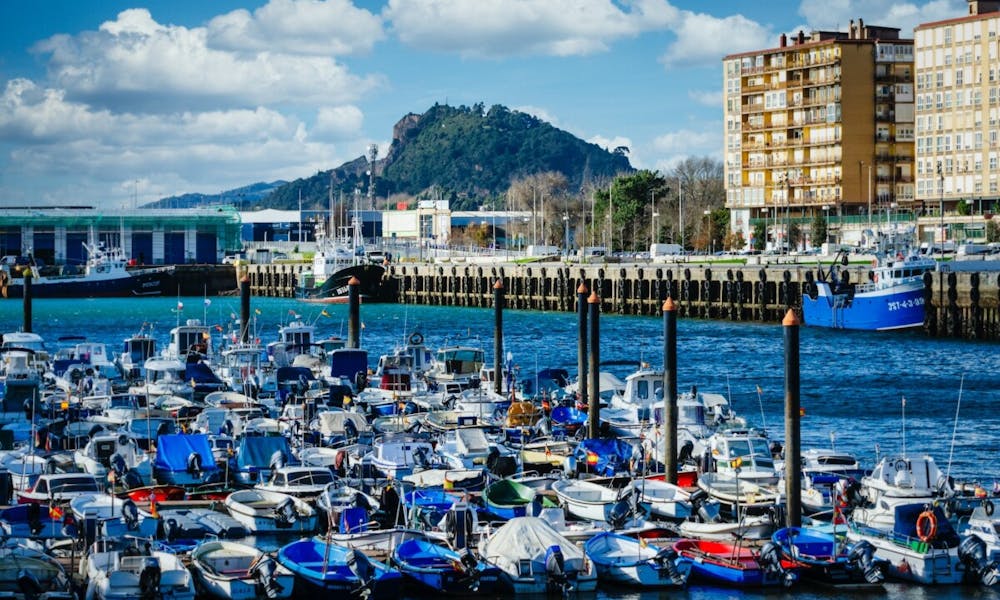Santander, a coastal city nestled in the northern part of Spain, is a vibrant and historically significant destination that beckons travelers from all over the world. Steeped in a rich tapestry of cultural heritage, this enchanting city has a captivating history that stretches back centuries. From its humble beginnings as a small Roman settlement to its rise as a prominent port city and a bustling financial center, Santander has witnessed the ebb and flow of civilizations, leaving an indelible mark on its landscape. In this article, we embark on a journey to explore the captivating history of Santander, Spain.
Early Traces: Roman Origins and Beyond
The origins of Santander can be traced back to the Roman period, when it was known as Portus Victoriae Iuliobrigensium. This small settlement, strategically located on the northern coast of the Iberian Peninsula, served as an important port for the Romans, facilitating trade and communication with other parts of the empire.
After the fall of the Roman Empire, the region fell under the rule of Visigoths and later the Moors. However, it wasn’t until the 11th century that Santander began to regain its prominence. With the Reconquista—the Christian reconquest of the Iberian Peninsula—Santander became an integral part of the emerging Kingdom of Castile.
Maritime Powerhouse: The Age of Exploration
The Age of Exploration brought significant prosperity to Santander, as it emerged as a key player in maritime trade during the 16th and 17th centuries. The city’s strategic location and thriving port made it an important hub for the transatlantic trade routes. Merchants from Santander played a pivotal role in the trade of goods and resources from the New World, contributing to the city’s economic growth.
During this period, Santander experienced a surge in architectural development, with grand palaces, mansions, and ornate buildings adorning its streets. These architectural wonders still stand today as a testament to the city’s opulent past.
A City Transformed: Modernization and Industrialization
The 19th century marked a transformative period for Santander. The city witnessed rapid industrialization and modernization, spurred by advancements in transportation, trade, and technology. The construction of railroads and the opening of the port to international trade further fueled Santander’s growth.
One of the notable figures in Santander’s history is the Marqués de Comillas, a prominent businessman and philanthropist. He played a pivotal role in the city’s development, investing in infrastructure projects, promoting education, and establishing industries. The Marqués de Comillas left an enduring legacy that shaped Santander into the thriving city it is today.
A City Ravaged: The Great Fire of 1941
Despite its steady progress, Santander faced a catastrophic setback in 1941 when a devastating fire swept through the city, leaving destruction in its wake. The fire, caused by a bombing during the Spanish Civil War, ravaged Santander’s historic center, reducing much of it to ashes.
The city, however, demonstrated remarkable resilience and embarked on a massive reconstruction effort. Santander was rebuilt with careful attention to preserving its cultural heritage, resulting in a harmonious blend of modern architecture alongside the remnants of its past.
Thriving Present: Santander as a Cultural and Financial Center
Today, Santander stands as a bustling city that seamlessly merges its rich history with contemporary allure. The city boasts a vibrant cultural scene, with numerous museums, art galleries, and theaters that showcase its artistic and intellectual prowess. The Centro Botín, a striking contemporary art center designed by renowned architect Renzo Piano, has become an iconic symbol of Santander’s commitment to the arts.
Furthermore, Santander has emerged as a significant financial center, hosting the headquarters of several banks and financial institutions. Its robust economy and business-friendly environment have made it an attractive destination for both national and international investors.
Captivating Landmarks: Exploring Santander’s Architectural Gems
As visitors wander through the streets of Santander, they are greeted by an array of architectural gems that offer a glimpse into its storied past. The Palacio de la Magdalena, a picturesque palace perched atop a cliff, showcases the elegance and grandeur of Santander’s bygone era. Another notable landmark is the Cathedral of Santander, a magnificent Gothic structure that has withstood the test of time.
The Paseo de Pereda, a beautiful promenade lined with majestic buildings and sculptures, provides a stunning vista of the Bay of Santander. This iconic promenade is a testament to the city’s commitment to preserving its historical heritage while embracing modernity.
The Beauty of Nature: Santander’s Coastal Splendor
Beyond its architectural wonders, Santander boasts breathtaking natural beauty. The city’s stunning coastline, with its pristine beaches and rugged cliffs, attracts nature lovers and outdoor enthusiasts alike. The Playa del Sardinero, a golden sandy beach, is a favorite spot for locals and tourists seeking sun, sand, and sea.
Moreover, the nearby Cabárceno Natural Park offers a unique experience, housing a diverse array of wildlife in a vast open-air sanctuary. Visitors can embark on a safari-like adventure, observing animals from all over the world roaming freely in their natural habitats.
Conclusion
The history of Santander is a tale of resilience, prosperity, and transformation. From its modest beginnings as a Roman settlement to its current status as a cultural and financial hub, Santander has overcome adversities and embraced progress while preserving its historical charm. As travelers explore the city’s architectural wonders, soak in its coastal splendor, and immerse themselves in its rich cultural offerings, they become part of the ongoing narrative that shapes Santander’s identity. Santander invites us to embark on a journey through time, where the past converges with the present, creating a truly captivating destination that leaves an indelible mark on the hearts and minds of all who visit.
